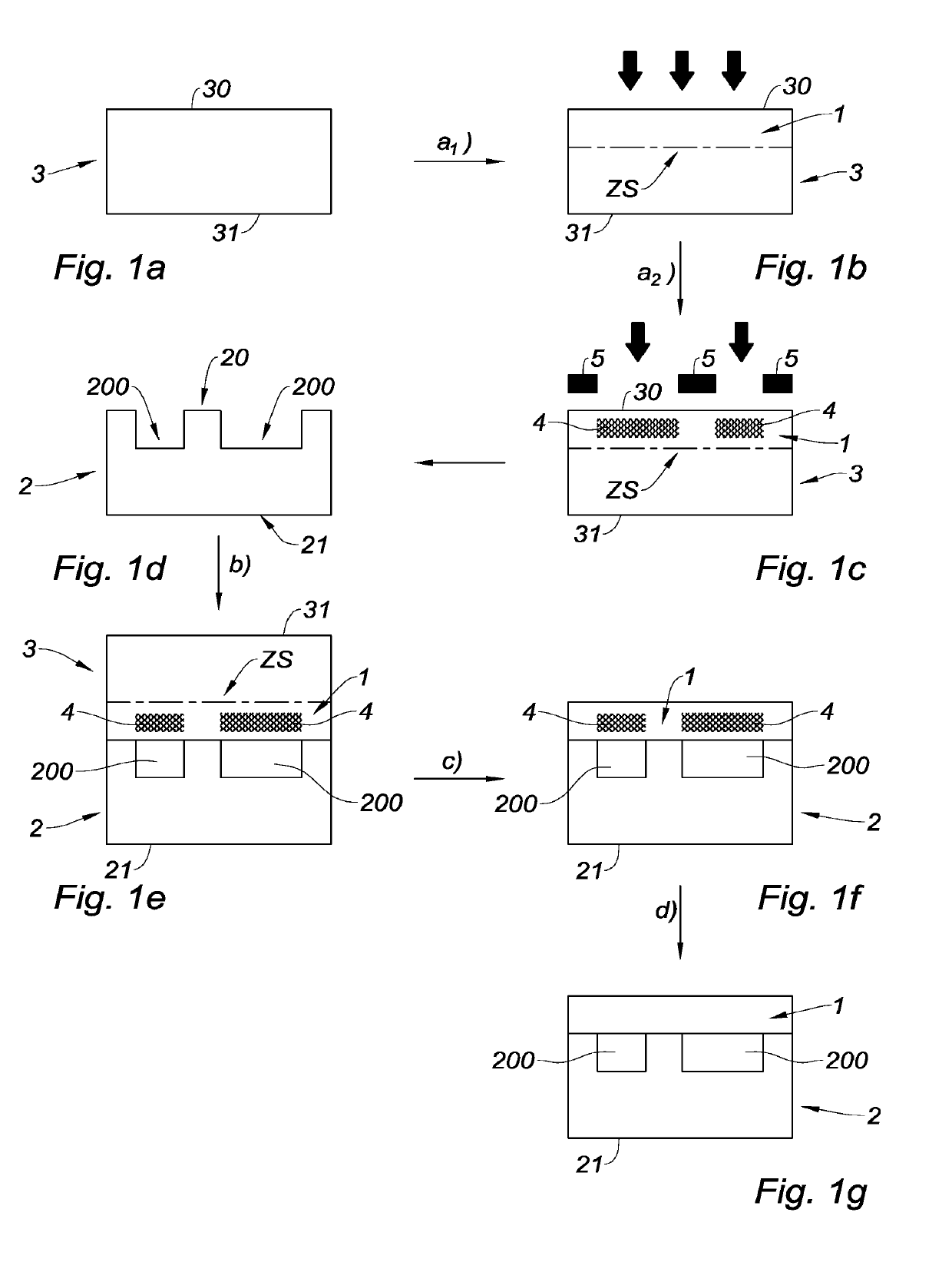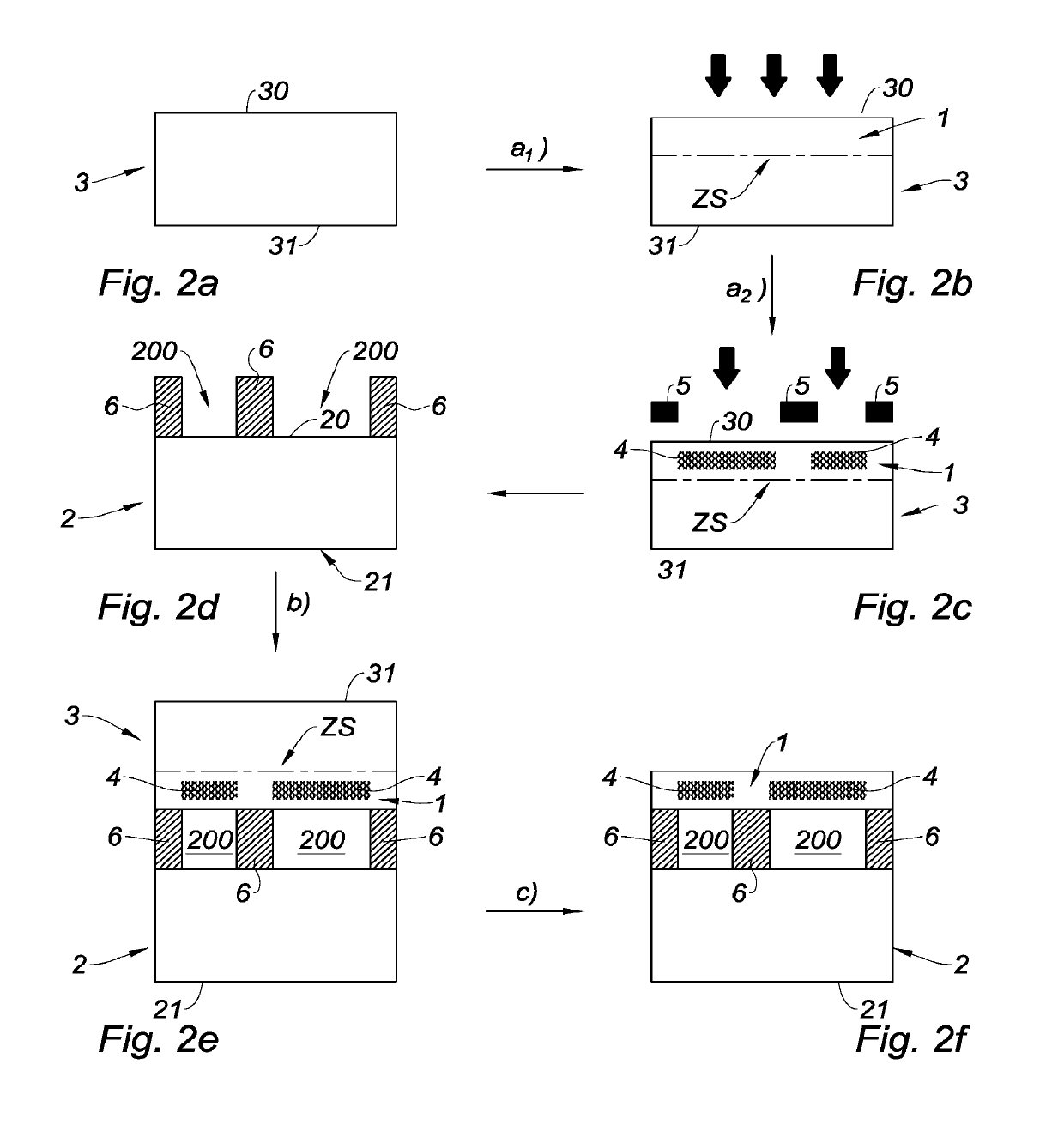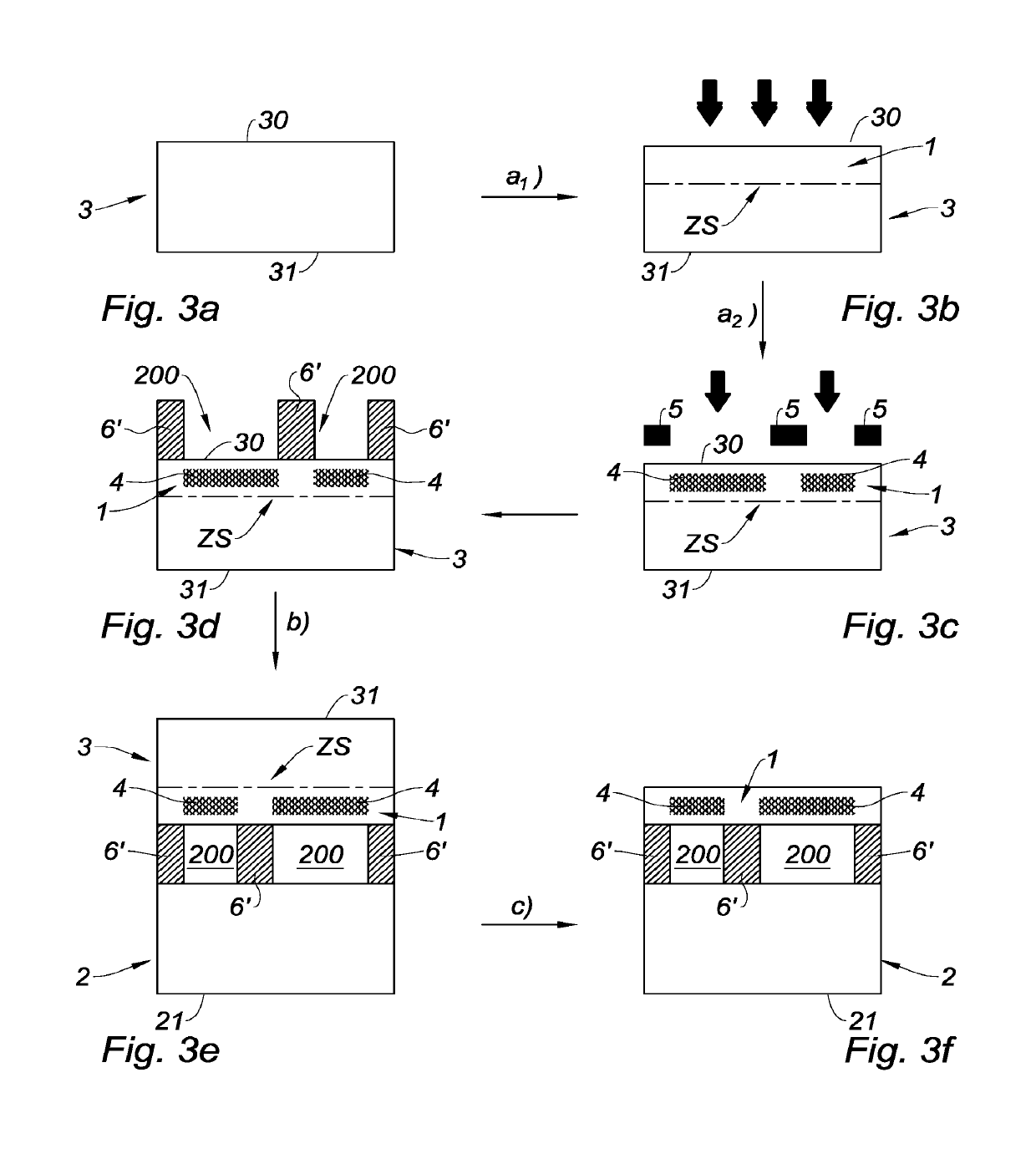Method for transferring a useful layer into a supporting substrate
a useful layer and supporting substrate technology, applied in the direction of coatings, microstructural devices, microstructured technology, etc., can solve the problems of failure of the useful layer transfer to the carrier substrate, the prior-art process is not entirely satisfactory, etc., to reduce the risk of crack propagation during step c) and inhibit the blistering of the implanted species
- Summary
- Abstract
- Description
- Claims
- Application Information
AI Technical Summary
Benefits of technology
Problems solved by technology
Method used
Image
Examples
Embodiment Construction
[0075]Elements that are identical or that perform the same function in the various embodiments have been given the same references, for the sake of simplicity.
[0076]One subject of the invention is a process for transferring a useful layer 1 to a carrier substrate 2 including a first surface 20, the process including the successive steps of:[0077]a) providing a donor substrate 3 including:[0078]a first surface 30,[0079]a weakened zone ZS comprising implanted species,[0080]the useful layer 1, which is bounded by the weakened zone ZS and by the first surface 30 of the donor substrate 3,[0081]an amorphous zone 4 lying, in the useful layer 1, parallel to the weakened zone ZS;[0082]b) assembling, on the side of the first surface 30 of the donor substrate 3 and on the side of the first surface 20 of the carrier substrate 2, the donor substrate 3 with the carrier substrate 2 by bonding; step b) being executed so that the amorphous zone 4 is at least partially facing at least one cavity 200 ...
PUM
| Property | Measurement | Unit |
|---|---|---|
| electrical conductivity | aaaaa | aaaaa |
| electrical conductivity | aaaaa | aaaaa |
| energy | aaaaa | aaaaa |
Abstract
Description
Claims
Application Information
 Login to View More
Login to View More - R&D
- Intellectual Property
- Life Sciences
- Materials
- Tech Scout
- Unparalleled Data Quality
- Higher Quality Content
- 60% Fewer Hallucinations
Browse by: Latest US Patents, China's latest patents, Technical Efficacy Thesaurus, Application Domain, Technology Topic, Popular Technical Reports.
© 2025 PatSnap. All rights reserved.Legal|Privacy policy|Modern Slavery Act Transparency Statement|Sitemap|About US| Contact US: help@patsnap.com



